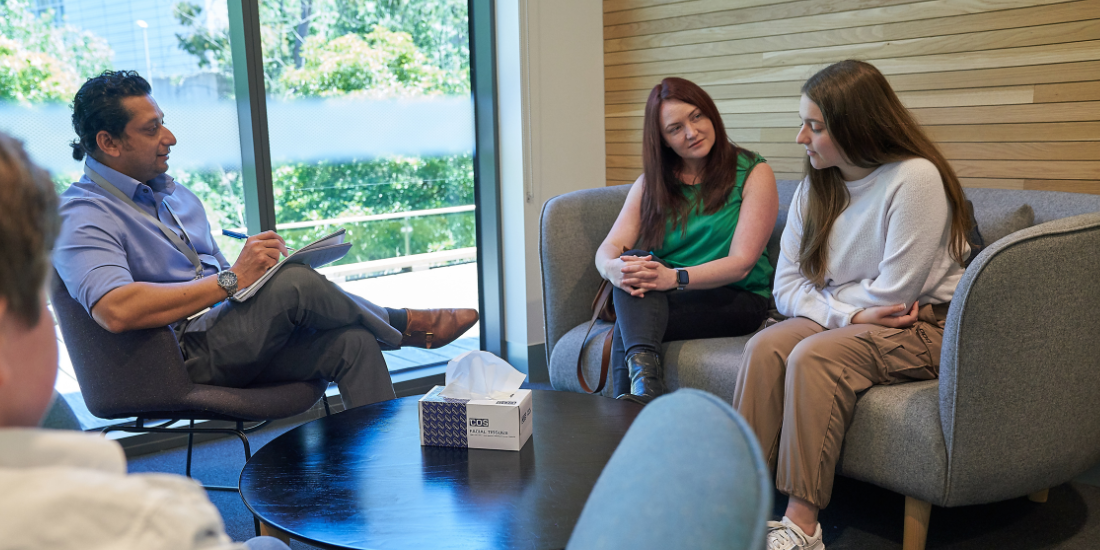
A new paper led by Orygen has outlined eight recommendations to address current gaps in aftercare for the increasing number of young people who self-harm, offering practical guidance for clinicians on how to apply current research evidence in the real world.
The recommendations include ensuring all young people receive a comprehensive therapeutic assessment after each episode of self-harm, improving young people’s engagement and cooperation by developing empathetic therapeutic relationships during initial assessments, and involving young people and families in the design of treatments.
Lead author and Senior Research Fellow at Orygen, Dr Katrina Witt, said outlining the principles was important to guide clinicians in best practice approaches to escalating rates of youth self-harm and suicide, while further research into the most effective treatments was undertaken.
“Self-harm is very common in young people and is associated with suicide, so it’s critical that we intervene early and support young people with evidence-backed, effective treatments that fit their specific needs,” Dr Witt said.
“For example, all young people need a review of their psychosocial risk, to understand potential risks they experience at home, school or in their personal life, after every episode of self-harm – to ensure they are receiving the right services.
“We know that currently this isn’t happening.”
Dr Witt said services needed to be properly resourced to provide effective treatments – which can be long term and intensive – and that co-design with young people was a key aspect that was currently missing.
“Staff need more training so they can effectively engage with young people who self-harm – and while establishing a good therapeutic relationship takes time it’s key to making these treatments work,” Dr Witt said.
“We need to ensure young people are involved in the design of treatments and services, but currently we see models of care developed with adults in mind and then only minimally adapted for young people's needs.
“If we want these treatments to work, they need to be designed with, and specifically for, young people.”
The review found that despite alarming rates of youth self-harm and suicide, research and clinical practice had not kept pace with the increasing need for care.
Researchers identified Dialectical Behaviour Therapy (DBT) and Cognitive Behaviour Therapy (CBT) as the treatments with the best evidence of effectiveness, and found they should be the first psychological interventions offered to young people who present with self-harm.
CBT focuses on changing negative thought patterns to improve behaviour and emotions, while DBT adds tools to help people manage intense emotions and improve relationships through mindfulness and acceptance. DBT is usual more prolonged than CBT prolonged, often up to 6-12 months as compared to around 12 weeks.
The review found that while these treatments show promise as an effective treatment for adults, adaptations were necessary for its use with young people, including modifying the language to suit the younger age group and involving family members as appropriate.
Available open access in the Journal of Child Psychology and Psychiatry, the review revealed there was limited evidence for effective interventions for those aged 12-25 and identified a clear need to develop new approaches to stem the rising tide of youth suicide and self-harm.
"If we want to improve research and, by extension, clinical practice, future studies are needed to investigate the drivers of youth self-harm and suicide, and more involvement of young people is needed in the design, implementation and evaluation of new approaches to treatment,” Dr Witt said.
The 8 principles and recommendations:
-
A comprehensive therapeutic assessment following self-harm should be undertaken after each episode.
-
There should be emphasis on establishing an empathic therapeutic relationship during initial assessment and subsequent interventions.
-
DBT shows promise for reducing repeat episodes of self-harm.
-
A modified version of CBT may also have benefits for some young people, but specific adaptations should be made for young people, including modifying language and involving family members as appropriate.
-
Greater family involvement in treatment may improve treatment outcomes.
-
Regular follow-up contact over the post-discharge period may be effective supporting young people in lower resource settings, and where time is limited, safety-planning interventions may be effective in reducing suicidal behaviour post-discharge
-
The use of medications solely for the prevention of self-harm or suicide in young people is not recommended.
-
Clinical staff should have easy access to training, mentoring and supervision to ensure they feel equipped to treat the young people in their care in a person-centred and compassionate manner.